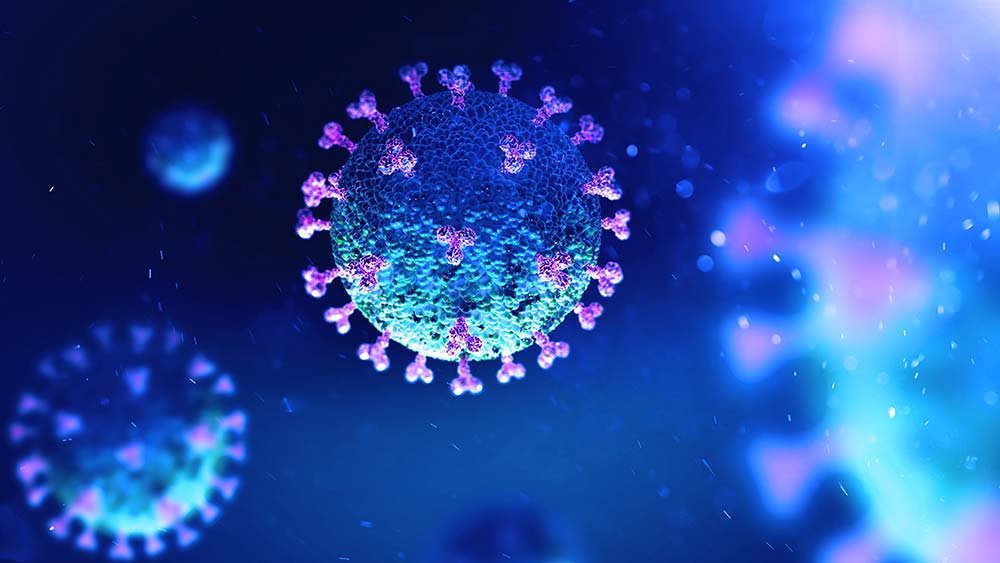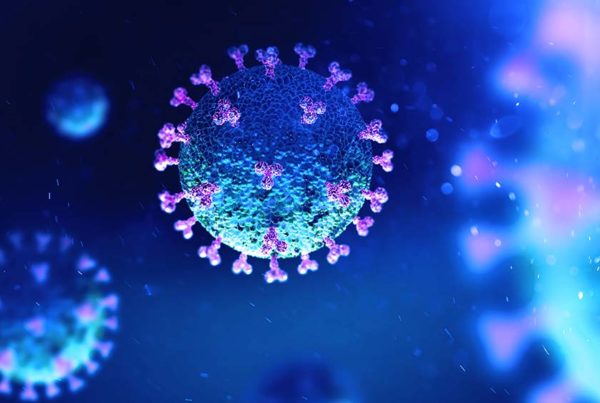
Call it subclinical or functional. The symptoms are sometimes vague but real, and often difficult to diagnose. Common names abound: fibromyalgia, Lyme, Epstein-Barr, chronic fatigue, or others, along with PTSD from physical and/or mental trauma. And now Covid-19. Addressing key lifestyle factors can help brain-body recovery.
It’s now estimated that up to 30 percent of those who recovered from an acute Covid-19 infection didn’t really recover, but instead are continuing to experience ongoing mild or debilitating symptoms.
In this way, Covid-19 appears to be following similar patterns of acute illnesses or trauma, stressors that lead to lingering chronic conditions, often without a diagnosis or obvious treatment, which could last months or years. These subclinical or functional problems, are sometimes called fibromyalgia, Lyme, Epstein-Barr, chronic fatigue, or others, along with PTSD (post-traumatic stress disorder) due to physical and/or mental trauma. The latest, referred to as long-haul Covid, or long-Covid, is not unlike other post-infection syndromes, sometimes minor ones like strep throat, or even emotional triggers like post-traumatic stress events.
All these names, while sometimes valuable initially, can get in the way of the patient getting better. And, whether post-infection or post-traumatic, these conditions typically follow other types of physical, biochemical or mental-emotional stress, or combinations, that occurred quickly (an auto accident), short-term (a bad flu) or long-term (a war zone).
In athletes, it can even follow a few hard training sessions, a long competitive event, and are often part of the overtraining syndrome. Students may encounter it after exam week, or accountants after tax season. And symptoms can range from minor to debilitating, including pain. The common denominator is stress.
Let’s just call them post-stress syndrome as they have many similarities and common remedies.
All in Your Head?
Patients with these complex and ambiguous histories often face a difficult and tortuous experience, as healthcare tends to be specialty-based and organ-focused. Just as unfortunate are the lessons from past health failures in other postinfection chronic disease syndromes. The healthcare industry is ambivalent about recognizing these as legitimate conditions. Often there is ridicule and references to the problem not being physical but mental. The insinuations of a psychogenic paradigm, or nonphysiologic origin, are all too frequent.
But ruling out diseases with traditional tests does not rule out organic illness. Even without a named condition, health dysfunction can clearly exist. Rather than treating a name, it’s best to address the individual.
Writing in the New England Journal of Medicine, Drs. Steven Phillips and Michelle Williams state that, “Some of the disregard can be attributed to the fact that long-Covid has disproportionately affected women. Our medical system has a long history of minimizing women’s symptoms and dismissing or misdiagnosing their conditions as psychological. Women of color with long Covid, in particular, have been disbelieved and denied tests that their White counterparts have received.”
The same can be claimed for other poststress syndromes.
Many don’t like to use the word “stress” as some think it infers this difficult-to-diagnose condition is a mental one, as too many patients are referred to a psychologist instead of an appropriate practitioner (not easy to find in today’s healthcare scene). However, there are things you can do. Common denominators that can cause all these conditions, factors that easily impair health but are often neglected, can be addressed by improving lifestyle. Discussed below, they are relatively easy, and can significantly help.
Rather than labeling the conditions as psychological, or trying to make other names fit—gastrointestinal complaints called irritable bowel syndrome (IBS), fatigue as chronic fatigue syndrome (CFS), and widespread pain as fibromyalgia — researchers now propose that these syndromes are best understood as one single condition with varying symptoms rather than many distinct diseases. A century-old idea, as Hans Selye, the first to use the term stress in relation to health, and the father of stress research, referred to these conditions as the “syndrome of just being sick.”
Given that stress is the common feature, we can simplify the name to post-stress syndrome.
Stress
We first sense stress in our brains. The response to infection, trauma or any stress triggers a brain-body reaction via the HPA (hypothalamic-pituitary-adrenal) axis. It affects bodywide neurological, hormonal and other mechanisms, including the metabolism, that, when too overwhelmed to work well, impair health.
Whether short or sustained, physical, biochemical or mental-emotion, the brain may sense these stressors as violent events, triggering an enormous HPA axis response, and driving more adrenal stress hormones. The reaction is meant for recovery, so all systems return to normal. But often, whether due to the severity or chronicity of the problem, and/or the presence of too many stressors (even seemingly minor ones), recovery can be delayed or just not happen.
Stress hormones at too high a level can impair glycemic control (blood sugar), sleep, fat metabolism, and immunity, and worsen chronic inflammation, which can cause pain. But without recovery of these systems, we can develop post-stress syndrome.
Enck and Mazurak describe how unexplained functional symptoms following stress can have a physical or biochemical origin, and that psychological and social factors can be secondary to the primary biological causes. They emphasize that the search for psychological causes can be misleading, and detract from proper treatment.
The gut, which houses much of our immunity, is also very sensitive to stress. So gut symptoms are commonly part of the post stress syndrome, with conditions such as IBS, dyspepsia, depression, chronic fatigue, or others throughout the body, and traditionally mistaken as having psychological origin.
The detrimental effects of stress have been well-known for over a century. If stress is either excessive or the body can’t adapt, lingering symptoms can result — ones common to virtually all the conditions described here.
Once the brain senses stress, it directs the pituitary gland to signal the adrenal glands to release stress hormones that help recovery. But if we don’t, the adrenals can literally become overworked or exhausted, leading to further symptoms. (Other glands, such as the thyroid, ovaries, etc. also participate in regulating stress and can be affected.)
The most common areas affected by stress include the immune and nervous systems, and the gut (the location of much of our immunity). However, impairment in these areas can adversely affect virtually any parts of the brain and body. Hence, many symptoms can arise given the situation (post-infection, post-trauma), existing health condition, and how well the body adapts. Common are low-grade infections and inflammation, poor gut function leading to indigestion and poor absorption of nutrients, fatigue, poor sleep, and, of course, mental-emotional states.
In short, until we better adapt and/or reduce enough stressors, recovery can be difficult. In addition, many people had pre-existing health problems, even those without significant symptoms, before the onset of post-stress syndrome (not unlike who have Covid-19 infections had pre-existing co-morbidities, especially overfat).
Due to extensive Covid-19 funding, more research into long-Covid is on the way, and may help us understand other very similar post stress conditions. However, individuals can act now to address the impaired HPA axis and related health issues. This includes realistically addressing excess stress (you may be unaware of how much you have), and improving metabolism and immunity. Here are five key factors to help accomplish this:
- Uncover and eliminate as much physical, biochemical, and mental-emotional stress as possible (even unrelated ones) so the brain and body can better adapt to those stressors that remain. Easier said than done? You’ll be surprised how easy it is to rid some or many of them. Here’s a link to making your stress list.
- Improve fat metabolism to allow better adrenal function. This begins by eliminating all junk food, but primarily sugar and other refined carbohydrates (most of what’s in the marketplace). It’s also important to replace junk with healthy, natural food that contains adequate protein and natural fats. In addition, eat smaller more frequent meals or snacks, 5-6 times a day. This will also help reduce excess body fat, which impairs immunity and promotes inflammation.
- Improve immunity. This includes avoiding too much or too little body fat — measure! Strictly adhering to No. 2 above should help accomplish this. But also, vitamin D is essential: check blood levels and supplement as needed (with healthy sun exposure during warmer weather).
- EPA-DHA from fish oil (omega-3) can help balance the omega fats to help reduce chronic inflammation and promote more anti-inflammatory activity (flax won’t work nearly as well). Likewise, avoid all inflammation-promoting vegetable oils (omega-6).
Also to help reduce chronic inflammation: consume fresh turmeric (a small piece twice daily, but beware it can stain your teeth so rinse afterwards). Ginger works well too (and it makes a good tea). - Avoid all high-intensity exercise, including traditional weight-lifting (MAF slow weights may be tolerated by some people in recovery). Whether helpful or not, high-intensity exercise is a significant stress. If you have the energy, very easy walking or other aerobic activity at a lower heart rate may be helpful.
If you already have implemented these items, or need to address more details of your health and fitness, refer to the MAF Method to further help personalize your needs. https://philmaffetone.com/method/
References
Deelen J. Targeting multimorbidity: Using healthspan and lifespan to identify biomarkers of ageing that pinpoint shared disease mechanisms. EBioMedicine. 2021; 67: 103364. doi:
Donnachie E, et al. Comorbidities of Patients with Functional Somatic Syndromes Before, During and After First Diagnosis: A Population-based Study using Bavarian Routine Data. Sci Rep. 2020; 10: 9810. doi: 10.1038/s41598-020-66685-4.
Enck P, Mazurak N. The “Biology-First” Hypothesis: Functional disorders may begin and end with biology—A scoping review. Neurogastroenterol Motil. 2018;30(10):e13394. doi: 10.1111/nmo.13394.
Logue JK, et al. Sequelae in adults at 6 months after COVID-19 infection. JAMA Netw Open 2021;4(2):e210830-e210830.
Phillips S, Williams MA. Confronting Our Next National Health Disaster — Long-Haul Covid. N Engl J Med June 30, 2021. doi: 10.1056/NEJMp2109285.








